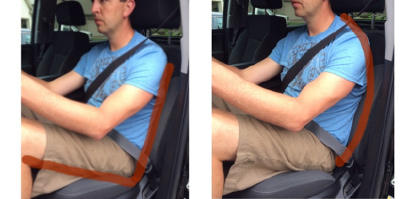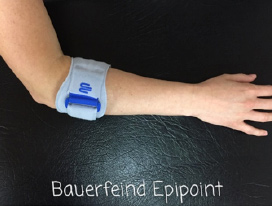Body Balance Quarterly #4
With the return of warmer weather, comes the return to outdoor activities.
The Spring/Summer edition of the BBQ features some ideas to help you stay fit with gardening, prevent stiffness and pain from those long road trips, and try to help you sift through whether to invest in a brace.
DRIVING:
Have you ever felt stiff and sore in your back, neck or knees after a long car ride? Has this soreness taken away some of your enjoyment on your trip?
Here are a few ideas you can easily incorporate to try to help:
- Pacing – As much as you may want to just “bite the bullet” and make the trip in one shot, it is very important to take breaks. Ideally, every 20-30 minutes. Realistically, this may not be manageable; but, the take home message is to at the very least, take more breaks than you may have before.
- Posture – Everything you try to do to keep good sitting posture is just as important in the car. Most car seats encourage an increased “C” curvature in the low and mid back because of the angle of the seat.

Proper positioning of the car seat should look like the green line in this picture:

As you can see, the 2 don’t match. Most cars now have multiple ways you can adjust the seat. We suggest you work with these to try to get as close to the “right” picture as possible. Also, if more adjustment needs to occur, we suggest adding a folded blanket/towel or cushion at the back half of the seat cushion to get the seat pan closer to neutral. Also, a small roll at the back can help to bring the back rest straighter. But, remember that safety is always the most important. That means that if you have to place yourself too close to the airbag or your head is too close to the roof of the car to be safe driving, then you may have to just try to get close to neutral posture and accept that perfection won’t be possible.
How Do I Minimize Pain With Gardening? :
If you love flowers or having fresh veggies grown in your back yard, it is important to remember that, physically, gardening involves postures that are not ideal for our body. That’s why we suggest you incorporate a few of the following ideas:
- Pacing – Our body prefers to be moving. It is not a good idea to be in a certain posture for more than 30 minutes at a time. The ideal situation is to plan and structure periodic rest breaks into your day. Set the timer on your phone as a reminder and then stop your task to do some walking or change from a bending task to one where you are standing.
- Proper Lifting – If you have to carry plants or mulch or using the wheel barrel, we suggest you make sure you remember your own personal limits. Just accept that some things you plan to carry might be too heavy for you. Ask someone to help or if you can, split what you are lifting into smaller weights and make more frequent trips.
- Proper carrying – Again, we suggest you don’t carry more than you can safely handle. Remember to keep what you are carrying close to your body. If you have to do multiple trips with the watering can, remember to switch which arm you are carrying it with to keep your muscles balanced.
- Hydration – Don’t forget to stay hydrated. Cells in the body need water to function properly. Remember to replenish what you lose!
To Brace or Not To Brace:
This is a common question we are often asked in the clinic. It is difficult for a consumer to sift through all the competing brands and gadgets that are currently out on the market or what may show up with a google search.
There are numerous factors to take into consideration when deciding if a brace will help and that is only half the challenge. Once you decide to get a brace, you must now try to decide what to purchase. In the next few editions, we will profile various physical injuries/problems and try to give you some insight into what to consider.
In this edition, we profile elbow bracing. When the tendons at the elbow get inflamed from overuse or repetitive movements, pain can develop at the inner elbow (also known as golfer’s elbow) or the outer elbow (also known as tennis elbow). In our professional experience, these problems respond well to using a brace; however, we do stress that you don’t try to self diagnose yourself and make sure you get the proper advice on whether this is your proper diagnosis.
The brace used for these problems is commonly called a “tennis elbow cuff.” The idea behind it is to create a pressure point about an inch away from the area of pain in the elbow. This allows you to continue to use the muscle from that point; but, reduces the amount of force going through the tendon attachment at the elbow (where the pain is). If it is doing what it is supposed to, there should be an immediate decrease in pain after the cuff is in place and you try to use the arm and hand. You should make sure that you don’t have it on so tight that it affects your circulation. Also, you should consider it’s comfort level because some are made with hard material, which can irritate the skin when bending the elbow.
If there is no immediate benefit, we don’t recommend using one.
Here is an example of what one looks like:

We do not recommend that people self diagnose their injuries and the advice provided is not to replace obtaining a proper assessment and diagnose by a qualified health care professional.

